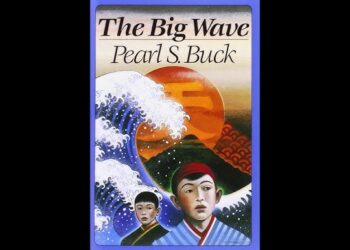Table of Contents
ToggleIntroduction
Darkness At Noon Summary By Arthur Koestler Darkness at Noon (originally published in 1940) is one of the most important works of 20th-century political fiction. Written by the Hungarian-born British author Arthur Koestler, the novel explores the psychological and philosophical dilemmas faced by an individual caught in the web of political ideologies and totalitarianism. Set against the backdrop of the Stalinist purges in the Soviet Union, Darkness at Noon examines the effects of revolutionary ideals on the human soul, the crushing weight of political oppression, and the moral compromises that accompany power.
The novel follows the fate of Rubashov, a high-ranking Communist Party official who is arrested during the Great Purge of the 1930s. As he faces interrogation and imprisonment, Rubashov is forced to reckon with his own role in the machinery of the totalitarian state, as well as with his personal beliefs and the compromises he made to further the revolution. The story is a powerful exploration of the tension between ideology and personal conscience, the betrayals that occur in the name of political expediency, and the complex interplay between power, guilt, and responsibility.Darkness At Noon Summary By Arthur Koestler
At its core, Darkness at Noon is not just a political novel, but a profound meditation on the nature of truth, freedom, and individual agency in an era marked by ideological fanaticism and repression. It is a chilling exploration of how revolutionary movements, once imbued with ideals of justice and equality, can become instruments of terror, erasing the very freedoms they sought to create.
Summary of Darkness at Noon by Arthur Koestler
Part I: Arrest and Imprisonment
The novel opens in an unnamed totalitarian state, a thinly veiled reference to the Soviet Union under Joseph Stalin. The protagonist, Nicholas Rubashov, is a former revolutionary leader and a prominent member of the Communist Party. He has been arrested on charges of treason and espionage, accused of conspiring against the very government he once helped establish. Rubashov’s arrest represents the arbitrary nature of Stalin’s purges, where even the most loyal and dedicated Party members were not immune from persecution.Darkness At Noon Summary By Arthur Koestler
Rubashov is a man in his mid-50s, stoic and pragmatic, who has spent his life devoted to the ideals of the revolution. He is imprisoned in a harsh, dimly-lit cell, facing the grim reality of his situation. He is forced to endure physical and psychological torture as he is interrogated by Gletkin, a ruthless and dogmatic interrogator who represents the Party’s unyielding belief in ideological purity. Gletkin is young, zealous, and completely committed to the Party’s ideals, showing no empathy for the personal suffering of those he interrogates.

As Rubashov is held in solitary confinement, he reflects on his past and his role in the Party. He recalls his early days as a revolutionary, when he believed in the nobility of the cause and the promise of a better world. Over the years, however, Rubashov has become disillusioned with the Party’s methods and its increasing cruelty. He begins to question whether the revolution’s ideals were worth the cost of human lives, and whether the ends can ever justify the brutal means used to achieve them.Darkness At Noon Summary By Arthur Koestler
Read More
Part II: The Interrogation
The narrative of Rubashov’s imprisonment and interrogation forms the central plot of the novel. He is subjected to a series of intense and psychologically taxing interrogations, where Gletkin relentlessly tries to extract a confession. The torturous techniques used by Gletkin, both physical and psychological, aim to break Rubashov’s will and force him to admit his guilt, even if it is fabricated.
Throughout these sessions, Rubashov experiences moments of internal struggle, caught between the urge to preserve his dignity and the realization that his confession could serve a higher purpose. As he reflects on his past actions, he becomes increasingly aware of the moral compromises he made in the name of revolution. He recalls his involvement in various purges and show trials, where innocent people were sacrificed for the sake of political expediency. Rubashov begins to question whether his loyalty to the Party and its ideals was worth the immense human cost.
In contrast to Gletkin’s unyielding devotion to the Party, Rubashov’s memories are filled with moments of personal doubt and regret. He recalls his relationships with various Party members, particularly his former colleagues who were also caught up in the purges. Rubashov’s former mentor, No. 1, who once symbolized the ideals of the revolution, has become a symbol of the Party’s ruthless authoritarianism. No. 1 is willing to sacrifice anyone, including Rubashov, in order to preserve the Party’s power and ensure its survival.
As Rubashov’s interrogation continues, he begins to lose his sense of identity. The oppressive environment of the prison, combined with Gletkin’s psychological manipulation, forces Rubashov to confront the collapse of his ideals and the reality of the system he once believed in. He begins to recognize the absurdity of his situation: as a high-ranking Party official, he is now a victim of the same system he helped create.
Part III: Self-Reflection and Confession
In the final stages of his imprisonment, Rubashov reaches a breaking point. The psychological strain of his confinement, coupled with the overwhelming pressure to confess, forces him to make a decision: whether to resist the Party and die with dignity, or to submit to its demands and save himself. Rubashov’s internal dialogue grows more philosophical, as he contemplates the nature of truth, justice, and individual responsibility.Darkness At Noon Summary By Arthur Koestler
He remembers the earlier years of the revolution, when the ideals of equality and justice were a beacon of hope. However, over time, these ideals became corrupted, and Rubashov realizes that he was complicit in the very atrocities that have come to define the regime. Despite his growing sense of disillusionment, Rubashov is unable to escape the moral quandary that haunts him. He becomes increasingly resigned to the fact that his actions in the name of the revolution were not only morally flawed but also ultimately futile.
In the end, Rubashov confesses to the charges against him, not because he believes he is guilty, but because he sees no other way out. He recognizes that the Party is more powerful than any individual, and that the ideals he once believed in have been corrupted beyond recognition. His confession represents the collapse of his personal and ideological convictions, as well as the realization that the revolution has betrayed its own promises.
Part IV: The Execution
The novel concludes with Rubashov’s execution. Despite his confession, Rubashov’s fate is sealed by the Party’s ruthless machinery. The novel ends on a somber note, with Rubashov’s death representing the ultimate tragedy of the revolution: the loss of individual agency, the destruction of human dignity, and the triumph of totalitarianism over personal conscience.
Themes and Analysis of Darkness at Noon
1. The Nature of Totalitarianism:
At its core, Darkness at Noon is a critique of totalitarian regimes, particularly the Soviet Union under Joseph Stalin. Koestler explores the ways in which totalitarian systems manipulate truth, crush dissent, and dehumanize individuals. The novel shows how the Party’s authoritarian control leads to the erosion of personal autonomy and the destruction of moral values.Darkness At Noon Summary By Arthur Koestler
2. The Corruption of Ideals:
The novel examines the tension between revolutionary ideals and the corrupting influence of power. Rubashov, once a committed revolutionary, becomes disillusioned as he sees how the ideals of equality, justice, and freedom have been perverted by the Party’s actions. The novel poses the question of whether the pursuit of political goals can ever justify the means used to achieve them, especially when those means involve betrayal and violence.
3. The Individual vs. the State:
Rubashov’s internal struggle reflects the broader conflict between the individual and the state. The Party demands total loyalty and conformity, leaving no room for individual conscience or dissent. Rubashov is forced to confront the consequences of his own participation in the Party’s actions, and the novel explores the emotional and psychological toll of living under such a regime.Darkness At Noon Summary By Arthur Koestler
Read More
4. The Absurdity of Ideological Purity:
Throughout the novel, Koestler critiques the blind adherence to ideological purity. Characters like Gletkin represent the dogmatic and fanatic belief in the Party’s infallibility, which leads them to justify even the most heinous acts. Rubashov, in contrast, begins to question the logic of ideological purity and recognizes the absurdity of the Party’s actions.
5. The Morality of Revolution:
The novel raises the question of whether revolution, in its pursuit of social justice, can maintain its moral integrity. Rubashov’s own transformation, from a revolutionary idealist to a man who has lost faith in the cause, underscores the dangers of revolutionary movements that are hijacked by authoritarian forces.Darkness At Noon Summary By Arthur Koestler

Conclusion
Darkness at Noon by Arthur Koestler remains a powerful and unsettling exploration of the psychological and moral dilemmas faced by individuals caught in the machinery of totalitarianism. Through the story of Rubashov’s internal struggle, the novel questions the nature of political loyalty, the morality of revolution, and the destructive power of ideology. It is a profound meditation on the consequences of living in a world where truth is manipulated, power is absolute, and personal conscience is sacrificed in the name of political expediency.
Read More
FAQ
Q: What is the significance of the title Darkness at Noon?
A: The title refers to the central metaphor of the novel, representing the ideological darkness that pervades a society under totalitarian rule. “Noon” symbolizes the height of the revolution—when the ideals of justice and equality are supposed to shine brightest—but instead, the revolution has brought about moral decay and betrayal. The “darkness” is the loss of truth, freedom, and individual dignity.
Q: Who is Rubashov, and what role does he play in the novel?
A: Nicholas Rubashov is the protagonist of the novel, a former high-ranking official in the Communist Party who is arrested during Stalin’s purges. He is forced to confront his past actions and the ethical compromises he made while supporting the revolution. His character represents the moral struggle between loyalty to the Party and personal integrity.Darkness At Noon Summary By Arthur Koestler
Q: What does the novel say about the relationship between power and morality?
A: The novel illustrates the corrupting influence of power, particularly when it is unchecked and absolute. It shows how political movements that begin with idealistic goals can become morally bankrupt when they are hijacked by those in power who are willing to sacrifice principles for control and survival.
Q: How does the novel critique totalitarianism?
A: Darkness at Noon critiques totalitarianism by showing how it destroys individuality, freedom of thought, and human dignity. The Party uses fear, propaganda, and brutal repression to control the population, and its leaders justify these actions by claiming they are for the greater good. The novel reveals the devastating effects of living in such a system, both for those in power and those who suffer under it.
Q: Is Darkness at Noon based on real historical events?
A: Yes, the novel is heavily influenced by the Stalinist purges of the 1930s and the rise of totalitarian regimes in the Soviet Union. The experiences of Rubashov mirror those of many historical figures who were victims of political repression, show trials, and purges during this time.

















